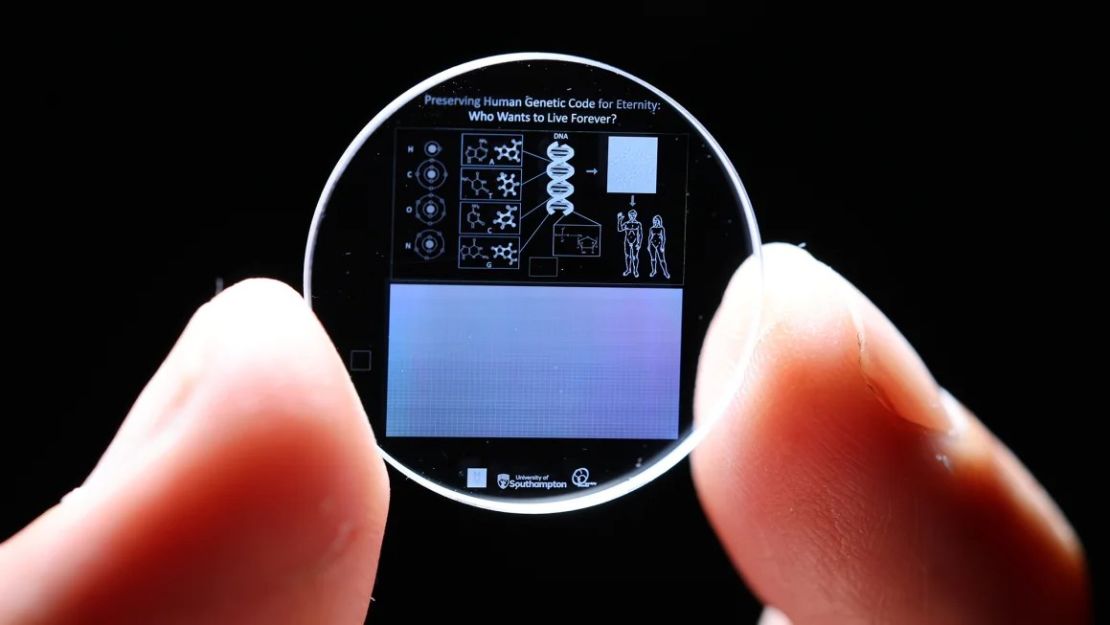London (CNN) – British scientists have stored the entire human genome in a5D Memory Crystal“, hoping that in the future it will be used as a model to lead humanity back from extinction.
The crystal, developed by a team of researchers at the University of Southampton’s Optoelectronics Research Centre, could also be used to create a registry of endangered plant and animal species.

It can store up to 360 terabytes of information for billions of years, and can withstand extreme conditions, including freezing, fire, direct impact, cosmic radiation and temperatures of up to 1,000 degrees Celsius, the university said in a press release published Thursday.
In 2014, glass was awarded the Guinness World Record for “Most Durable Digital Storage Material.”
Kazansky’s team used ultrafast lasers to record human genome data in gaps as small as 20 nanometers (a nanometer is about a billionth of a meter).
They describe data storage in the crystal as 5D because the information is translated into five different dimensions of its nanostructure: height, length, width, orientation, and position.
“The 5D memory crystal opens up the possibility for other researchers to build a permanent repository of genomic information from which complex organisms such as plants and animals can be recovered if science allows in the future,” said Peter Kazansky, professor of optoelectronics, who led the study at the Southampton team.
The team had to consider who—or what—would retrieve the information in such a distant future.
It could be an intelligence (a species or a machine), or it could be so far in the future that there would be no frame of reference for it. To help whoever finds it, the researchers have included a visual clue.
“The visual key engraved on the crystal gives the researcher knowledge of what data is stored inside and how it can be used,” Kazansky said.
“Their work is impressive,” said Thomas Haynes, who leads research into DNA storage at Imperial College London and was not involved in the study. However, he says questions remain about how this data will be read in the future.
“What Southampton is offering may be more durable; however, it begs the question: why? Future generations? Sure, but how will they know how to read the glass? How will they know how to build the device to read the glass? Will the device be available hundreds of years from now? He added. “I can barely plug in my 10-year-old iPod and listen to what I heard then.”
Currently, the crystal is stored in the Archive of Humanity’s Memory, a time capsule inside a salt cave in Austria.

In 2018, Kazansky and his team used crystal memory technology to store Isaac Asimov’s science fiction book trilogy “Foundation,” which was then launched into space in a Tesla Roadster. The technology has also been used to store important documents from human history, including the Universal Declaration of Human Rights and the Magna Carta.
Earlier this year, scientists unveiled a plan to protect Earth species in a refrigerated biorepository on the Moon, aiming to save species in the event of a catastrophe on our home planet.






More Stories
The final moments of the “Halloween Comet” were captured by the SOHO spacecraft
University of Michigan scientists have discovered what’s inside a black hole
NASA shares the scariest images of the sun in the lead-up to Halloween